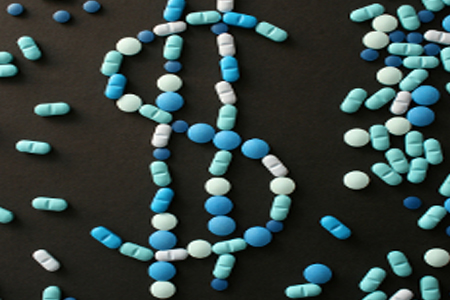Measure Lives Gilead Returns, And The Returns It Provides
By Louis Garguilo, Chief Editor, Outsourced Pharma

If you measure a giraffe, you get length; an elephant, circumference. If you measure cost, you get price; outcomes, value.
You get what you measure. The one-sided reporting and narrowed focus on the wholesale cost of Sovaldi (Sofosbuvir), a breakthrough drug for the treatment of Hepatitis C, confuses consumers as to price and value within healthcare systems. The instigated hubris is perpetuated by elements of the system itself, national politics, and a lack of interest or understanding in the media of the real story.
The first measurable value Sovaldi brings is curing patients and vastly improving quality-of-life during treatment. The second value proposition is inherent within the free-market economy creating companies like Gilead Sciences, Inc., that bring us these innovative drugs. Pinning a scarlet letter on biopharmaceutical companies – and in so doing free-market philosophy – is a growing pathology destined to negatively impact all of us.
Here’s the real rub, though: Gilead’s Hepatitis C and most all innovator drugs save healthcare systems billions of dollars collectively.
Gilead is not bankrupting healthcare as is being widely misreported. It's bankrolling the system. Why isn’t this being shouted from the rooftops? Consumers beware: You are being fed bad medicine. Criticism of Sovaldi or Gilead does not stand up to fair analysis.
Bankrupting the U.S. healthcare system is the apparent drive to more socialist “markets” operated by: unreal price-fixing (government programs and “rebates”; intermediary formularies); secretive price-collusions (biopharma making undisclosed deals to healthcare distributors to bring drugs to patients); false dichotomies and innuendo (if biopharma prices drugs to stay profitable and in business, patients can’t afford them); and the wrong standards of measurement (see above).
A Two-Patient Trial

In a more perfect today, she’s a patient with that same disease but a new drug choice. She will be cured in one-third the time of the less effective treatment above. The wholesale cost of the drug and treatment is around $100,000, about one-fifth the cost of the prior treatments and drugs. She pays less than before, so does the “healthcare system” of government reimbursements and programs, health care “providers,” hospitals, her employer and insurance company.
This should be the story of patients with Hepatitis C, and the value of an innovative drug on the entire healthcare system. New drugs priced for company profitability should also greatly reduce the cost of health care while curing or improving quality of life for patients. We should all question why this is never the front-page health story.
Railing Against The Cure
The coordinated public rage over the cost of a fairly priced breakthrough drug deserves investigation. First, it cannot be disconnected from the much larger and protracted cacophony of the Affordable Care Act (ACA or Obamacare). Moreover, that connection has crossed wires. The U.S. adds bureaucracy and costs to a healthcare system that can only survive via value created by free markets, but it rails against a new drug that introduces substantial cost savings in a growing disease area. If there was any doubt about the movement from free-market economics in Obamacare, this should pack them away.
When asked at an FDA/CMS summit about the uproar over Sovaldi, John McHutchison, MD, executive vice president, Clinical Research, Gilead, says calmly, “We took the previous difficult available therapy that was a much higher cost, didn't charge a premium for our drug that had a higher efficacy and lower side effects. Everything that happened in the press …” McHutchison, also a medical doctor, university professor, and of whom it is said a cure for this disease has been a life’s work, pauses here before continuing:
“I mean, you were seeing people go through [liver] transplantations or die before transplantation. For these patients with the disease, it’s all a distraction and disappointment. It [Sovaldi treatment] is a cure. It’s only twelve weeks long, now once a day. It's highly effective in more than 95 percent of patients, and the long-term costs of caring for those people with advanced liver disease will be offset by the costs initially. Yes, I think it is a distraction, it’s disappointing, and it raises larger issues.”
Perhaps the most concerning issue is how we have allowed the biopharmaceutical industry to become a convenient scapegoat for a healthcare market in financial distress and worsened by government interference. When we turn negative on a company like Gilead, we turn on our own well-being. Innovation withers on what is becoming a dangerous socialist whine.
The Best Biotech Ever
“Gilead is the most successful biotech in the history of the industry,” says Chris Garabedian, President & CEO, Sarepta Therapeutics, at that same summit in December. Since 1980, his company has been determined to find a drug to treat Duchenne muscular dystrophy. “We do a disservice to this whole industry if we criticize Gilead for getting a drug approved and being profitable. It’s an example of what every company out there is trying to do.”
Garabedian continues, “In the entire history of the biotech industry, we're left today with about a dozen companies that generate an operating profit. That's out of about 300-plus public companies listed on the NASDAQ or the New York Stock Exchange. And that's out of more than 4,000 private companies around the globe, trying to develop therapeutics. This is a difficult industry in which to generate a profit.”
And without profit, none of the companies would be discovering or developing our next innovative drugs; when a breakthrough occurs, like in any other industry, companies must be rewarded by fair market dynamics.
Garabedian mentions the example of Vertex, a “successful” biotech. Over the years Vertex has had to incur billions of dollars in operating losses in its great efforts to bring new drugs to patients. “Now they have a breakthrough, a cystic fibrosis drug,” says Garabedian. “Revolutionary for patients of cystic fibrosis, and yet here, one of the bastions of our industry is fighting for profitability. They also had one of the first breakthrough Hepatitis C drugs. They had to pull it off the market, in part because they could not justify the expenses, and because there were better alternatives, like Gilead's regimen. We have to think deeply about this.”
Deep thought would be welcomed. Most immediately, honest reporting and meaningful measurement of value, would be a welcomed start. Biopharmaceutical companies are in a difficult industry and need to be paid fair market value to keep innovating for us. No profits, no new drugs; and no Obamacare or any other healthcare “system” can survive.
Why Sovaldi As Touchstone?
Interestingly, there are numerous anti-cancer drugs on the market that are priced much higher than Sovaldi. Ramsey Baghdadi, founder, Prevision Policy LLC, in a run-up to a question on price, says, “Given all that [Gilead went through to bring a Hepatitis C cure to market], when the prices came out, at least for people that follow the industry closely, it seemed in a range lower than the oncology area, or for the disease area. I think a lot of us didn't bat an eye at it, in terms of the pricing.”
It does, then, appear this drug became a touchstone for other reasons. Those reasons could include it is one of the first major innovator drugs in the Obamacare era demonstrating how private sector dynamism works to create market pricing. It challenges assumptions of artificial pricing and illogical measurements of systemic costs.
Whatever the reason, it feels like every media outlet has swallowed the negative narrative hook, line, and sinker. “Prescription-drug spending rose more than 12% in 2014, the biggest annual increase in over a decade,” was a typical headline above articles providing no real analysis.
In fact, this statistic is not a license for condemnation of an industry: It’s cause for some celebration. More innovative and effective drugs sold on the market save countless lives (but we should be counting them), and billions of dollars in downstream health care costs. At least they should register billions in savings. Here is the area of health care the public should scrutinize. Indeed, the biopharmaceutical industry is a comparatively smaller contributor to the overall cost of total health care in the U.S., but can give back billions in savings to the system.
Alas, instead, we hear things like this from Senator Elizabeth Warren (D-Ma.). She wants to create a ‘swear jar,’ a fund that punishes the biopharmaceutical industry when she thinks they have gone astray of Medicare or Medicaid law, or committed a legal indiscretion. In typical political nomenclature subterfuge (see ACA above), she calls it the “Medical Innovation Act.” Any company in any industry that runs against established law should be held accountable. But the senator’s sheer hubris, and deep psychosclerosis towards the biopharmaceutical industry, is astounding. Unfortunately, it may not be atypical.
What is going on here? More of us should question whether these attitudes and the current lack of honest measurement of value – and costs – in the healthcare system aren’t hampering our health.
We’ll take this up again in part 2, when we touch upon funding choices, generics and biosimilars, and companies in other industries as comparison.
--------------------------
This article utilizes some of the frank and thoroughly civil discussion at the FDA/CMS Summit session on Drug Pricing, in Washington, D.C., December 2014. Session members were: Ramsey Baghdadi, Founder, Prevision Policy LLC (moderator); Chris Garabedian, President & CEO, Sarepta Therapeutics; David Beier, Partner, Bay City Capital; John McHutchison, MD, Executive Vice President, Clinical Research, Gilead; Mark McClellan, MD, PhD, Senior Fellow and Director, Health Care Innovation and Value Initiative, Brookings Institution: Robert Temple, MD, Deputy Director for Clinical Sciences, Center for Drug Evaluation and Research (CDER), Food and Drug Administration (FD).
All opinions or conclusions drawn are the editor’s alone.
